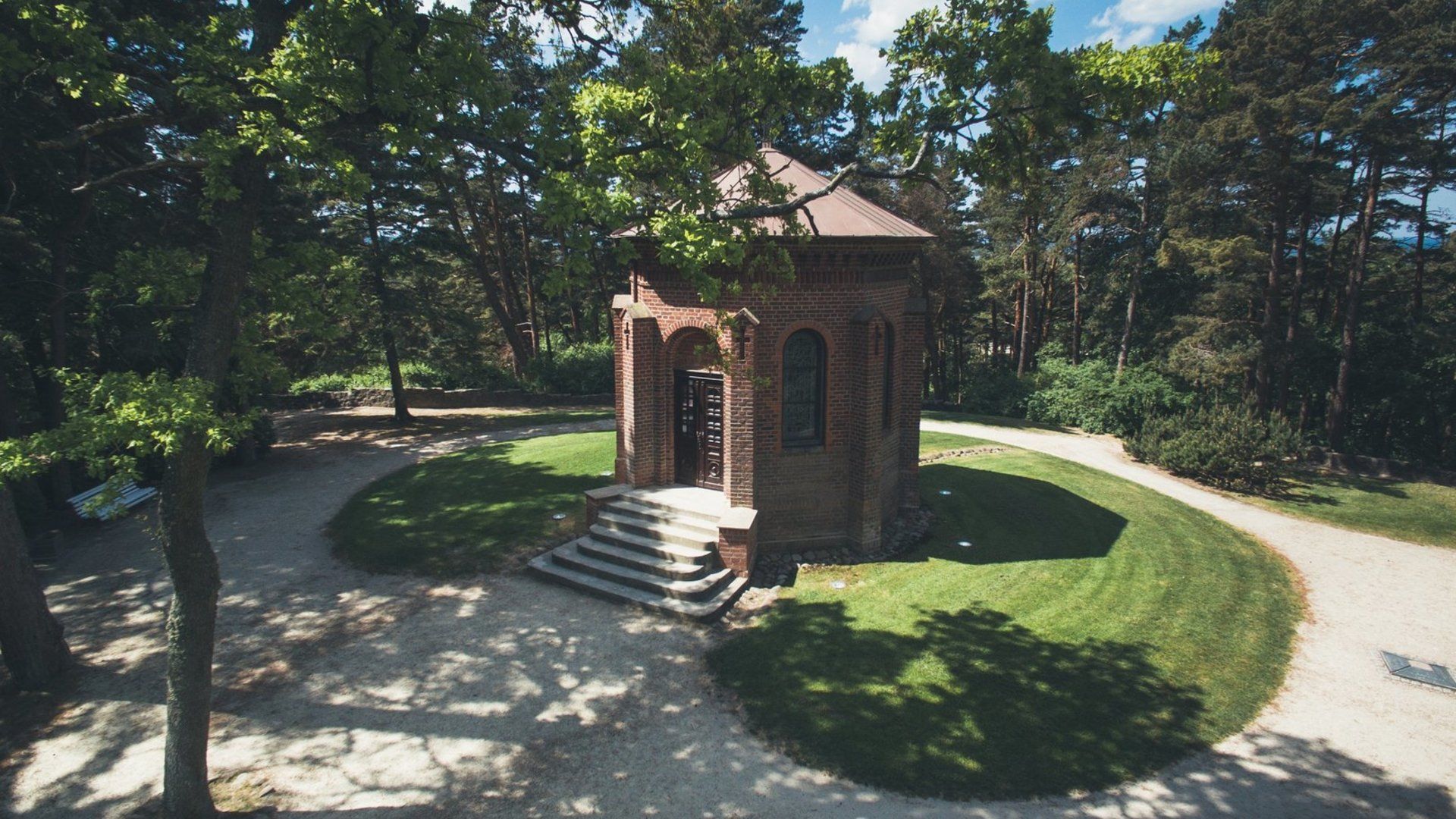
18 people was here
0 reviews
Although the burial place of Birutė, the wife of Grand Duke Kestutis, is unknown to historians, Palanga residents have been telling stories for hundreds of years that the noble Duchess had rested forever in the place where the St. George's Chapel.
According to another legend, there was an altar in this area, the sacred fire of which was protected by the queen Birutė even before her marriage to the rulers of Trakai and Samogitia. In order to make our countrymen forget the idolatrous rituals in 1505 after the baptism of Lithuania. a wooden st. George's Chapel, but eventually collapsed because of the larger church in the city. A wooden cross was erected in its place, but the inhabitants of the neighborhood were still on the hill, hoping that Birutė, who had become a goddess, would intercede from above, though paganism was already a sinking pass.
Finally in 1869. The present neo-Gothic chapel was built according to the project of the architect K. Mejer by the pastor Konstantinas Steponavičius. Later the hill was planted with trees and stairs were installed. 1976 The chapel was decorated with seven stained glass windows created by the painter Liud Pocius.
During the interwar period, this chapel was chosen to commemorate the return of Palanga to Lithuania, as evidenced by a commemorative plaque on the wall of the chapel. From 1918 onwards. until 1921 Palanga region belonged to Latvia together with the whole Kurzeme province, which was captured by tsarist Russia.
© Lietuvos kurortai
Cultural heritage
Loading...
Loading...
Cultural heritage
©2025 trip.lt

